Prices for popular electronics of the past in today's money: the 1990s
In previous articles we discussed the prices of popular electronics of the 1970s and 1980s in today's money. The time of the nineties came when the consoles of the fourth and fifth generations, the PowerBook line from Apple and the IBM ThinkPad, the first smartphones and mobile phones with interchangeable color panels, entered the market.
This article contains computers and laptops, game consoles and portable game consoles, as well as phones and smartphones. It is impossible to cover the whole range of devices, each gadget of the 1990s separately. But everyone can remember some device with which he dealt at that time - please share them and tell about them in the comments.

In the 1980s, major computer manufacturers, including IBM and Compaq, reigned supreme in the market. But what if you reduce the cost of supplying computers to stores? Michael Dell thought about this when he started selling computers by mail, collecting them only after receiving the order. Northgate Computer also worked.
The cost of the Power Max 386/33, which Northgate Computer began selling in 1990, started with $ 3,999 . Today it is about 7,529 dollars.
For this money, a version based on an Intel 80386 processor with a hard disk of 200 megabytes, 16 megabytes of RAM, with the operating system Microsoft 3.0 was offered. Plus - drives for 3.5 and 5.25 floppy disks.
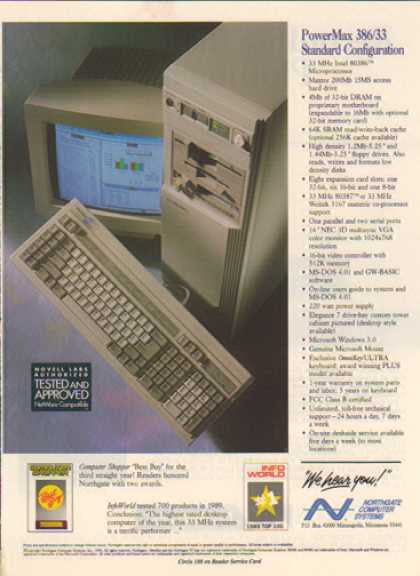
As for operating systems, Macintosh and Commodore Amiga boasted a graphical interface in the early 1990s. In 1990, Microsoft released Windows 3.0. The MS-DOS Executive tool for managing files and running programs was replaced by the Program Manager and the File Manager. In the fall of 1991, multimedia extensions were added to the system to support CD-ROM and sound card drives. The OS required 640 KB of RAM, an Intel 8086/8088 processor or higher and a 6.5 MB hard drive.
The full version of Microsoft 3.0 in 1990 cost 149.95 dollars, today it is 282 dollars. Today, Microsoft 10 Home costs $ 119, Windows 10 Pro costs $ 199.

In the same year, the first version of Photoshop for Mac was released. The program cost 1,000 dollars. Today it is 1,882 dollars.
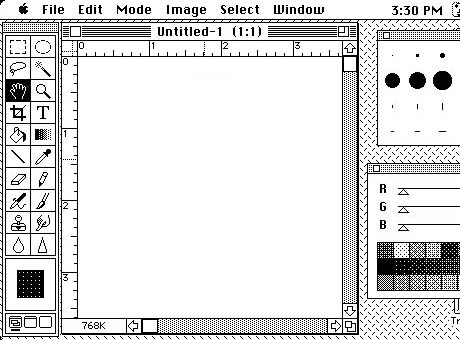
The GUI is easier to use when there is a mouse or trackball. Logitech Trackman cost 139 dollars, today it is 261 dollars.
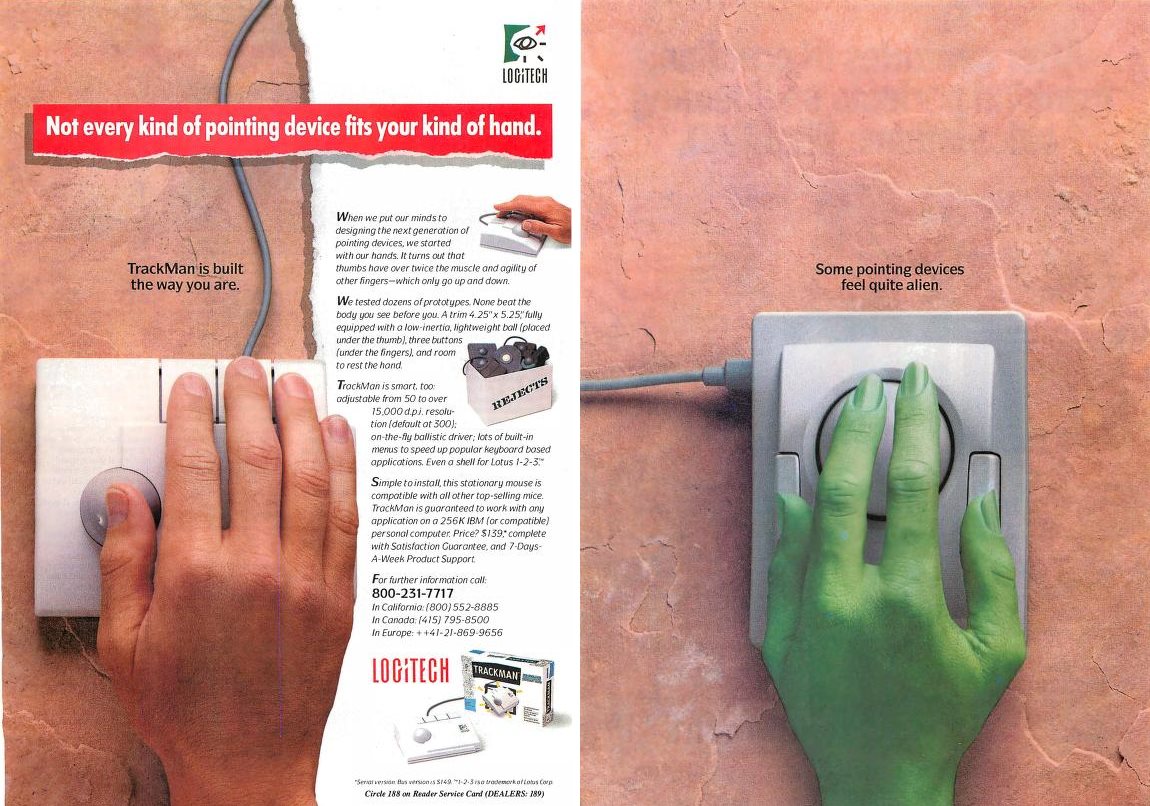
Apple in 1991 released the PowerBook 100, a very interesting notebook that gave rise to the lineup that we know today as the MacBook. The PowerBook 100 was built on the basis of the Motorola 68000 processor with a frequency of 16 MHz, had a monochrome LCD display with a resolution of 640 x 400 pixels and a trackball under the keyboard.
John Sculley, the head of Apple, allocated a million dollars for marketing a laptop. Profit was a billion.
The price of a laptop at the start was $ 2,300. Taking into account inflation for 2016 it is 4 154 dollars.
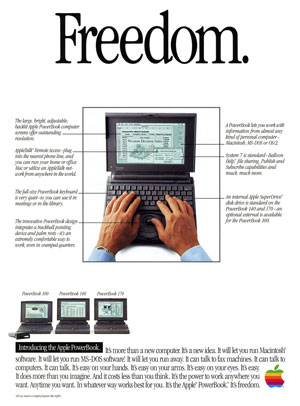

In 1992, IBM also continued to work on improving its own portable computers. Richard Sapper in 1980 became an industrial design consultant at IBM and was directly involved in the development of laptops. The gray cases were replaced by black ones, a red trackpoint appeared in the middle of the keyboard.
ThinkPad 700s boasted a bright color TFT-display with a diagonal of 10.4 inches, a high level of contrast, a wide viewing angle. By today's standards, the display was frankly so-so, but at that time it was a novelty for the market of portable computers.
The laptop cost 2,375 dollars - 4,163 today.
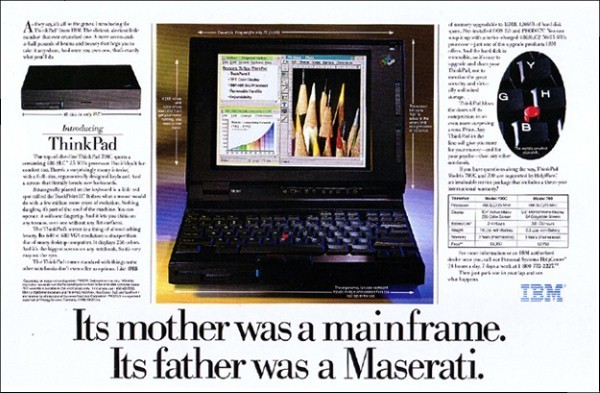
In 1995, Apple released the Power Macintosh 6200. The computer boasted a 3.5-inch floppy drive, a CD-drive, a headphone port on the front panel and volume control buttons above it. Detailed analysis of the device read in this article .
The computer cost 2,300 dollars. Today it is about 3,700 dollars.

In 1998, Digital Equipment Corporation launched the Digital HiNote VP laptop . Slim, lightweight, with full-size keyboard and screen. Above the keyboard was an additional display indicator with icons.
The price of the laptop started at $ 3,799. Today it is 5,703 dollars.
The company Digital Equipment Corporation in the 1980s was one of the main competitors of IBM, but in 2001 merged with Hewlett-Packard because of the difficult financial condition.
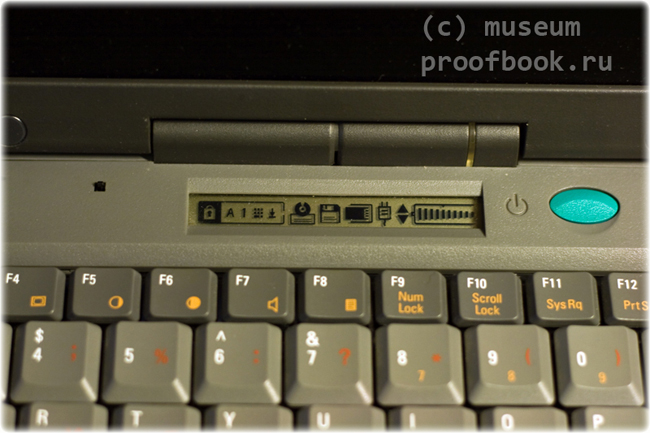
Brilliant advertising: "I have less" - "No, I have less" - "Wow, really, and he is so attractive."
In 1998, Steve Jobs introduced the iMac. The computer was built on the basis of the processor IBM PowerPC G3, had from 32 to 512 MB of RAM, 15-inch screen of 1024 x 768 pixels and a drive up to 128 GB.
The computer of the first generation of this line cost from 1 299 dollars. Today it is 1 918 dollars. Today, for about the same money, you can buy an iMac with a 27-inch 5K screen.
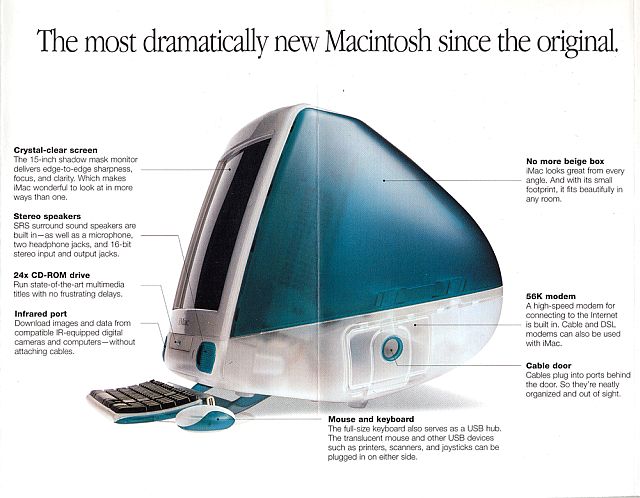
In the 1990s, two very important events in the field of communications took place, one on a global scale, the second on a Russian scale. In 1991, Motorola introduced the first working prototype of a cellular system and GSM standard phones - Global System for Mobile Communications. The services introduced call forwarding, call barring, call waiting, call hold and global roaming.
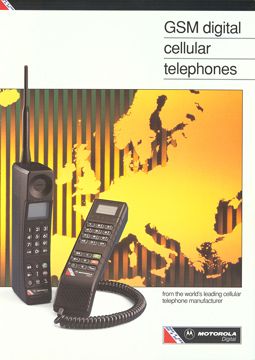
In Russia, on September 9, 1991, the mayor of St. Petersburg, Anatoly Sobchak, made the first national cellular telephone call. He was answered by the mayor of Seattle. On the video and photos you see the phone Mobira MD 59 NB2 production Nokia. The device weighed 3 kilograms.
The cost of the Mobira was 1 995 dollars. Translated into today's money is 3 603 dollars. Unheard of luxury for the average person: the average salary at that time in Russiawas 613 rubles - at the official rate this amount could be exchanged for $ 350.
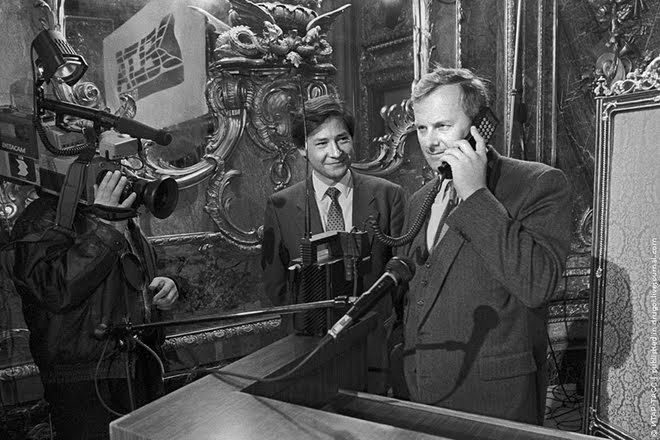
In 1994, the first smartphone in the world went on sale. The device with a 5-inch touch screen combined the functions of a mobile phone, pager, PDA and fax. Applications included a calendar, calculator, email, games, world time. The keyboard was onscreen. This half a kilo device was called IBM Simon .
At the start, IBM Simon was worth 899 US dollars. Today it is about 1 492 dollars. Today, with this money you can buy a couple of flagships.
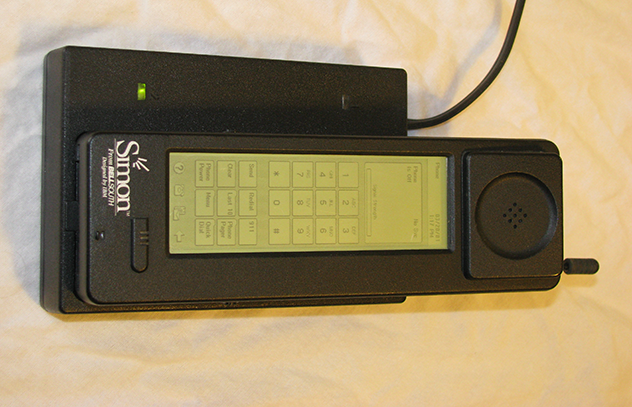
In 1996, the Nokia 9000 Communicator appeared on the market. This device had two monochrome displays. This mini notebook had an internal display with a resolution of 640 x 200 pixels and an external 50 x 38 and full-size keyboard.
Nokia aimed at business people, and thereforethe price was appropriate: $ 800, which in 2016 is about $ 1,254.
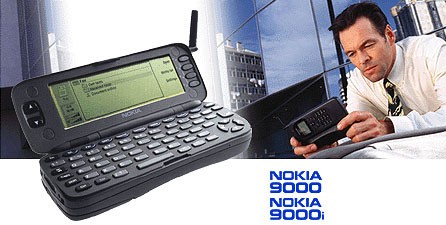
Today, the clamshell is a cheap "grandma" for Russian buyers. In 1996, the world's first device of this type appeared - Motorola StarTAC , whose name and design are inspired by the Star Trek cult TV series. This is the world's first folding bed. The phone weighed only 88 grams. PC World has placed this device in 6th place in the ranking of the Greatest Gadgets over the past 50 years .
At the start of sales, the price was $ 1,000 - $ 1,568 in today's money.
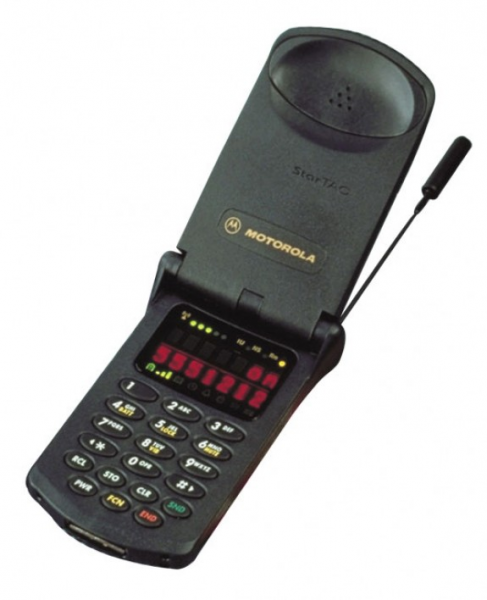
The share of smartphones in the 1990s was small compared to conventional mobile phones. Telephones have become more accessible - from a means of communication for businessmen, they have become an accessory for a wider range of users. Nokia released the 5110 in 1998. The gadget got interchangeable Xpress-On panels — you could easily change the look of the device and even turn it into a clamshell. And in this phone was the famous "Snake". The model has become one of the most popular.
At the same time I ran into a problem: it is unclear how much this phone cost at the start of sales. If you have such data - please share in the comments.
It is only known that in April 1999 in Chuvashia it cost 6,804 rubles. The calculator suggests that today it is 47 000 rubles.
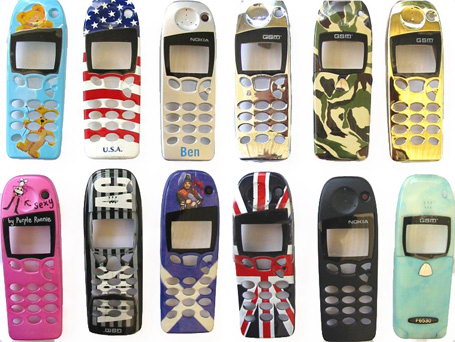
In the late 1980s, the dawn of 16-bit gaming systems began. The first was the NEC PC Engine in 1987, but the main battle was between the Sega Mega Drive and the Super Nintendo Entertainment System.
The Sega Mega Drive hit the market in 1988. Until now, it is sold in the United States, Europe, Brazil and Russia. The price at the start was 200 dollars. Taking into account inflation today is 416 dollars.
Such candid photos in advertising consoles today is difficult to imagine.
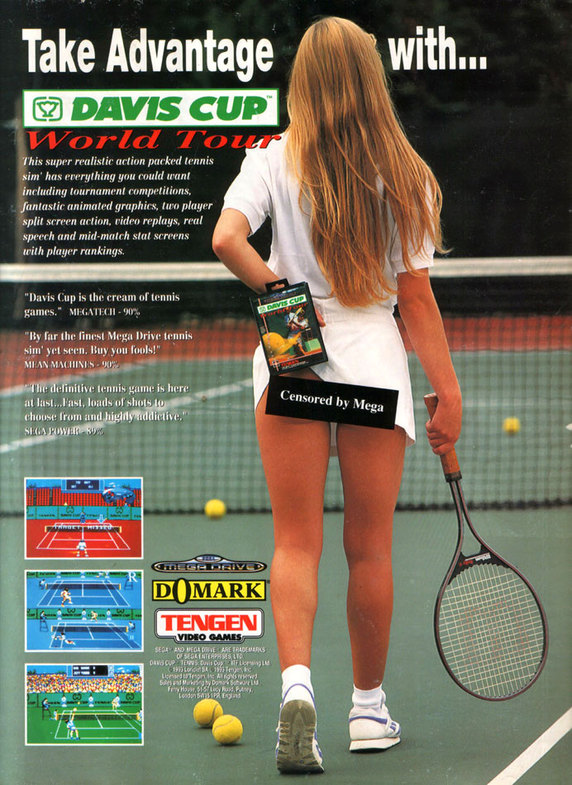
Super Nintendo for the period from 1990 to 1999, 49 million units were sold. At the start of sales, the console cost as much as a Mega Drive - $ 200. Today it is 416 dollars. Today, for $ 300 in the US, they sell the Nintendo Wii U.
After the advent of Nintendo began to crowd out Mega Drive and became the market leader. In many respects - thanks to the cooperation with such game developers as Capcom, Konami, Square and Enix.
Paul Rudd has not changed since the shooting of this advertisement for more than twenty years:
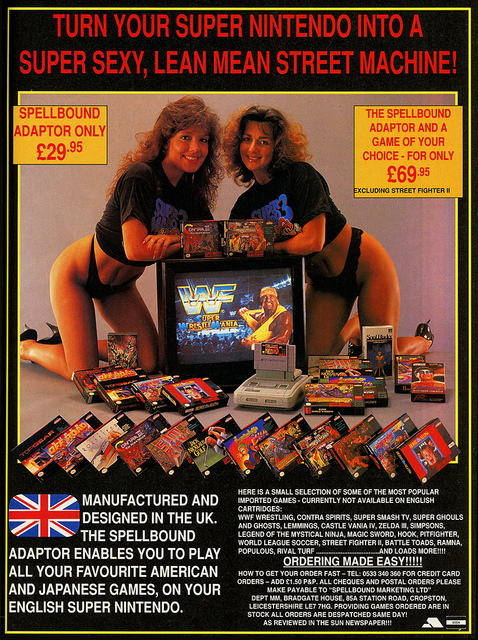
Time went forward, and in 1993, the fifth generation 3DO prefix appeared from Panasonic, Sanyo, Creative and Goldstar. It was on this console that the first game of the greatest racing franchise of Need For Speed was released . The prefix was released within three years.
The cost of the console - $ 699 at the time of release, it was more expensive than its competitors. Today it is 1,190 dollars. This was one of the reasons for the entire project.

Sega picked up the baton with the Saturn prefix, one of the three leaders of the fifth generation gaming consoles. On the launch day in November 1994, 170,000 of these consoles were sold. A total of 9.5 million copies were sold.
The prefix went beyond Japan in 1995 and began selling for $ 399. Today it is 644 dollars.
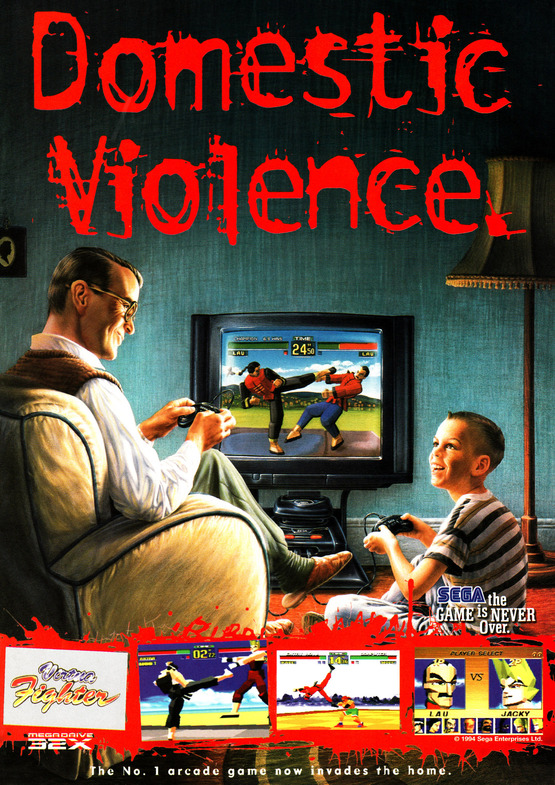
The third leader, who eventually became the first - Sony PlayStation. Over 11 years of production, they sold 100 million consoles. The prefix could be used to play audio and video discs.
This console was cheaper than its competitors. It entered the American market in 1995 at a price of $ 299. Today it is 482 dollars. By the way, in 2013 PlayStation 4 started selling for $ 399.
Let's remember the sound with which the console was turned on. Although he is in my head and so plays when I remember the first PS.
Such posters in the Moscow Metro mercilessly tore, to carry to his home.
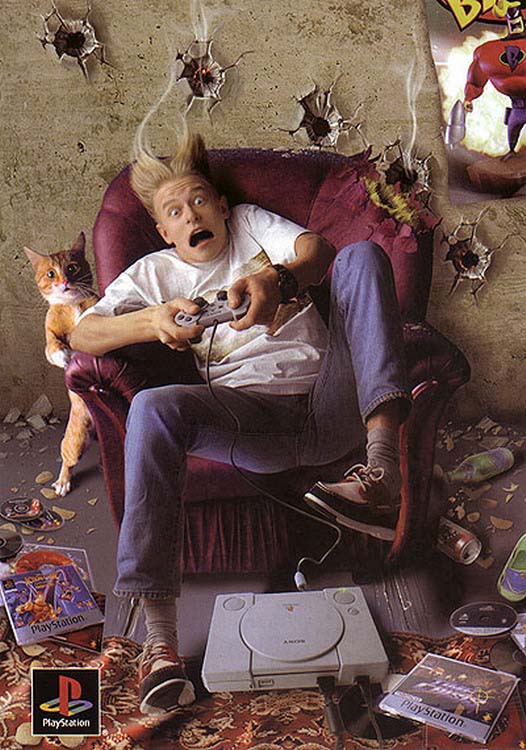
In 1998, the era of 128-bit consoles began. Past influence tried to return Sega, releasing DreamCast. It was the fifth and last prefix from this manufacturer. In the US, the prefix appeared in September 1999 at a price of $ 199. Today it is 293 dollars. Included with the console was a modem or an Ethernet adapter, a browser was pre-installed on DreamCast. Users could play games online or go to sites, and the Visual Memory card allowed to play mini-games directly on it.
The prefix was supposed to compete with the PlayStation and Nintendo 64, but came out, unfortunately for the company, shortly before PlaySation 2. But we will talk about this prefix in the next article.
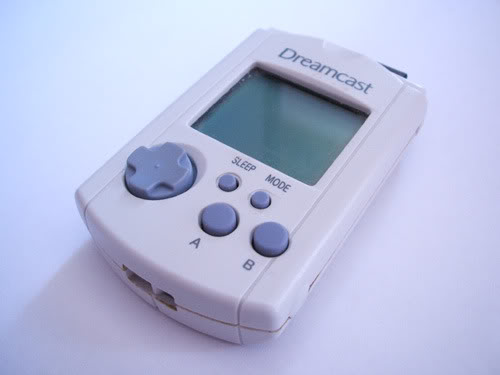
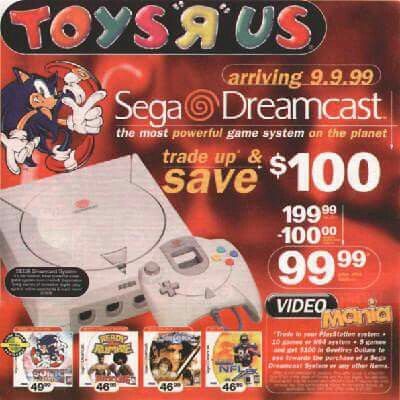
The dream of a child from the 1990s was Nintendo's Game Boy. The first version of the console had a screen of 160 x 144 pixels, the sound and the GameLink function, which allowed playing simultaneously with another user. In addition to games, there were also bonuses such as an external battery, a wire to connect to a TV, and even a sonar to search for fish underwater. And the printer, of course.
In 1990, the Game Boy cost $ 89.95. Today it is 169 dollars. By the presence of a Game Boy, it was possible to calculate a major.
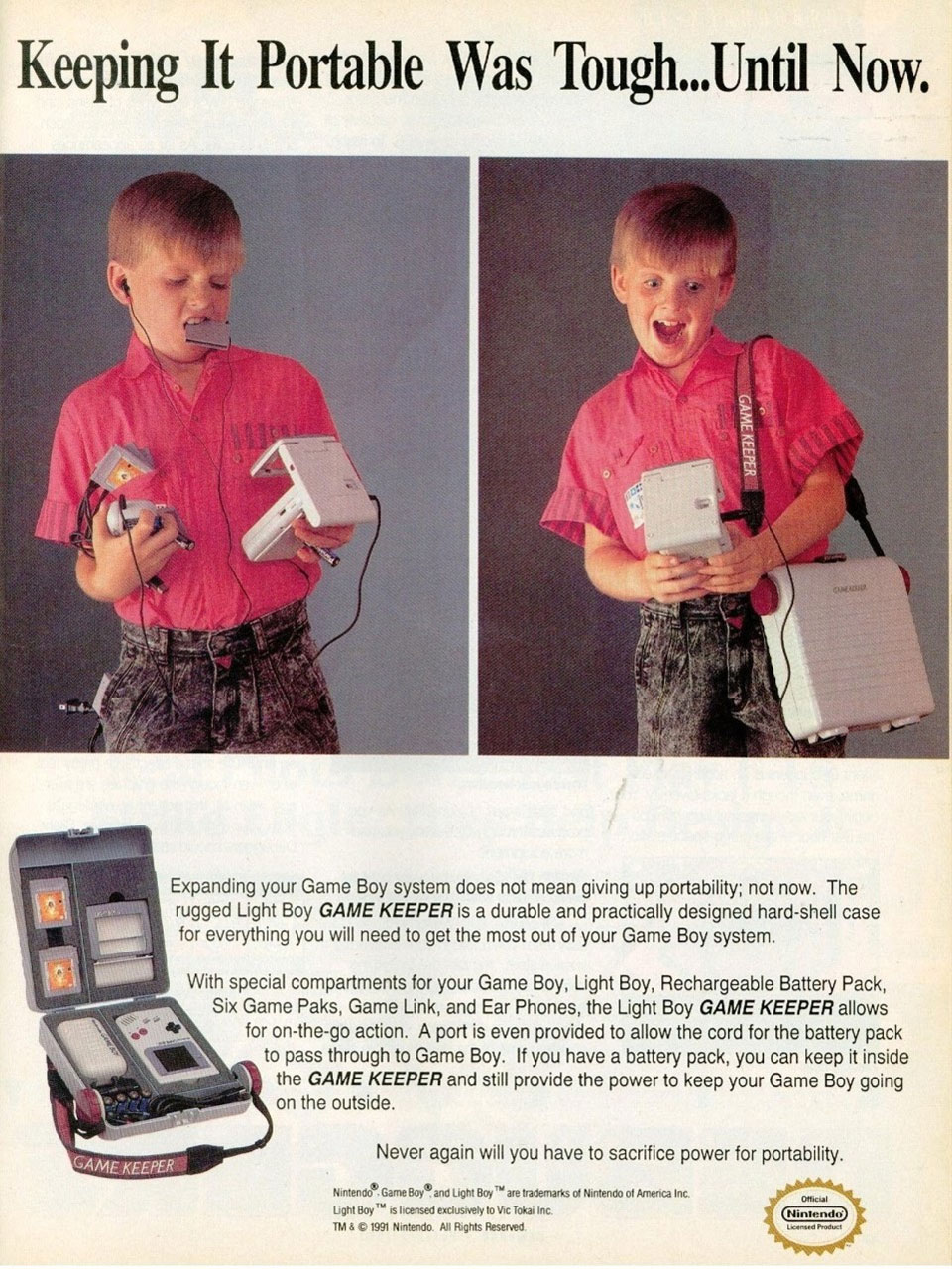
In the early 1990s, Sega introduced its version of the portable console. The hardware part of the Sega Game Gear was built on the basis of the eight-bit game console Sega Master System, which simplified the transfer of games from the home console to the portable. In terms of technical characteristics, this console exceeded the Game Boy: the Sega had a 3.2-inch color screen, a lens that enlarged it to 5 inches, and support for expansion modules. But there was also a minus - a set of batteries was enough for only four hours of play.
In the US, the Sega Game Gear appeared in 1991 at a price of about $ 150. Today it is 270 dollars.
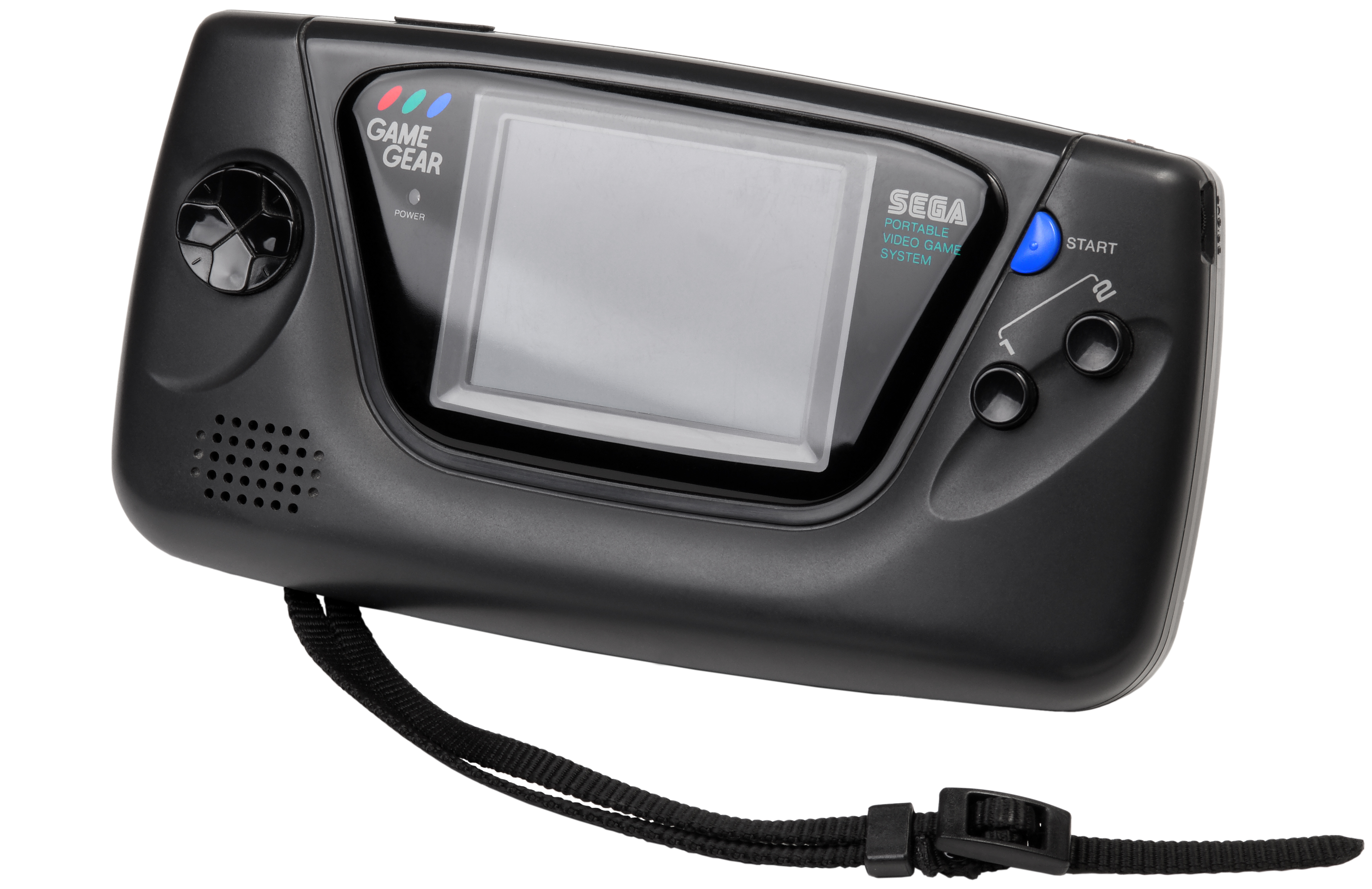
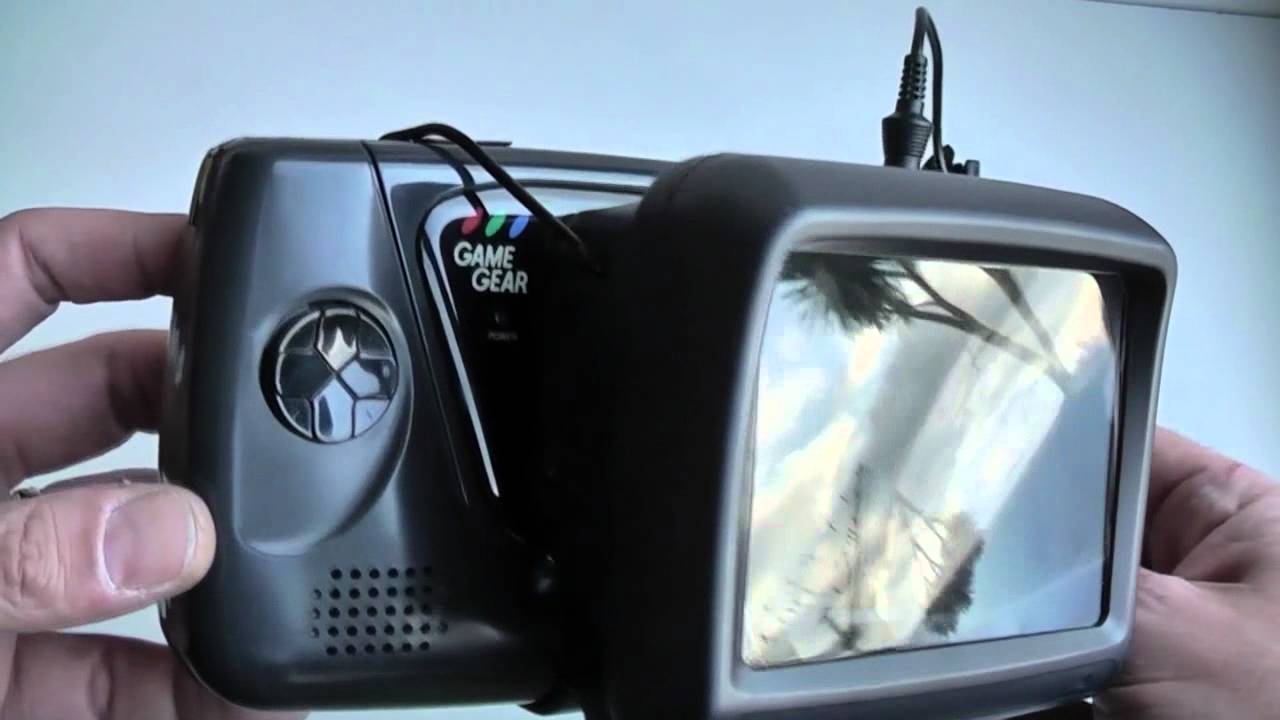
Nintendo was not in a hurry with the release of a color console. Perhaps because several similar projects by other manufacturers in the early 1990s failed miserably. But still in 1998, the Game Boy Color appeared on the market. The device is equipped with a 6-centimeter display with a resolution of 169 x 144 pixels. For work required two finger batteries.
Game Boy Color started selling at a price of 70 dollars. Taking into account inflation for 2016, it is about 105 dollars. The new Nintendo 3DS XL today costs $ 200.
For the console released about seven hundred games. Including Resident Evil: Gaiden.
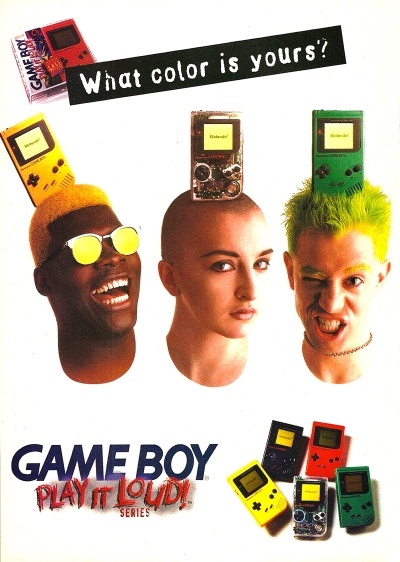
For calculating the cost used calculator Wolphram Alpha .
This article contains computers and laptops, game consoles and portable game consoles, as well as phones and smartphones. It is impossible to cover the whole range of devices, each gadget of the 1990s separately. But everyone can remember some device with which he dealt at that time - please share them and tell about them in the comments.

Computers
In the 1980s, major computer manufacturers, including IBM and Compaq, reigned supreme in the market. But what if you reduce the cost of supplying computers to stores? Michael Dell thought about this when he started selling computers by mail, collecting them only after receiving the order. Northgate Computer also worked.
The cost of the Power Max 386/33, which Northgate Computer began selling in 1990, started with $ 3,999 . Today it is about 7,529 dollars.
For this money, a version based on an Intel 80386 processor with a hard disk of 200 megabytes, 16 megabytes of RAM, with the operating system Microsoft 3.0 was offered. Plus - drives for 3.5 and 5.25 floppy disks.

As for operating systems, Macintosh and Commodore Amiga boasted a graphical interface in the early 1990s. In 1990, Microsoft released Windows 3.0. The MS-DOS Executive tool for managing files and running programs was replaced by the Program Manager and the File Manager. In the fall of 1991, multimedia extensions were added to the system to support CD-ROM and sound card drives. The OS required 640 KB of RAM, an Intel 8086/8088 processor or higher and a 6.5 MB hard drive.
The full version of Microsoft 3.0 in 1990 cost 149.95 dollars, today it is 282 dollars. Today, Microsoft 10 Home costs $ 119, Windows 10 Pro costs $ 199.

In the same year, the first version of Photoshop for Mac was released. The program cost 1,000 dollars. Today it is 1,882 dollars.

The GUI is easier to use when there is a mouse or trackball. Logitech Trackman cost 139 dollars, today it is 261 dollars.

Apple in 1991 released the PowerBook 100, a very interesting notebook that gave rise to the lineup that we know today as the MacBook. The PowerBook 100 was built on the basis of the Motorola 68000 processor with a frequency of 16 MHz, had a monochrome LCD display with a resolution of 640 x 400 pixels and a trackball under the keyboard.
John Sculley, the head of Apple, allocated a million dollars for marketing a laptop. Profit was a billion.
The price of a laptop at the start was $ 2,300. Taking into account inflation for 2016 it is 4 154 dollars.


In 1992, IBM also continued to work on improving its own portable computers. Richard Sapper in 1980 became an industrial design consultant at IBM and was directly involved in the development of laptops. The gray cases were replaced by black ones, a red trackpoint appeared in the middle of the keyboard.
ThinkPad 700s boasted a bright color TFT-display with a diagonal of 10.4 inches, a high level of contrast, a wide viewing angle. By today's standards, the display was frankly so-so, but at that time it was a novelty for the market of portable computers.
The laptop cost 2,375 dollars - 4,163 today.

In 1995, Apple released the Power Macintosh 6200. The computer boasted a 3.5-inch floppy drive, a CD-drive, a headphone port on the front panel and volume control buttons above it. Detailed analysis of the device read in this article .
The computer cost 2,300 dollars. Today it is about 3,700 dollars.

In 1998, Digital Equipment Corporation launched the Digital HiNote VP laptop . Slim, lightweight, with full-size keyboard and screen. Above the keyboard was an additional display indicator with icons.
The price of the laptop started at $ 3,799. Today it is 5,703 dollars.
The company Digital Equipment Corporation in the 1980s was one of the main competitors of IBM, but in 2001 merged with Hewlett-Packard because of the difficult financial condition.

Brilliant advertising: "I have less" - "No, I have less" - "Wow, really, and he is so attractive."
In 1998, Steve Jobs introduced the iMac. The computer was built on the basis of the processor IBM PowerPC G3, had from 32 to 512 MB of RAM, 15-inch screen of 1024 x 768 pixels and a drive up to 128 GB.
The computer of the first generation of this line cost from 1 299 dollars. Today it is 1 918 dollars. Today, for about the same money, you can buy an iMac with a 27-inch 5K screen.

Telephones
In the 1990s, two very important events in the field of communications took place, one on a global scale, the second on a Russian scale. In 1991, Motorola introduced the first working prototype of a cellular system and GSM standard phones - Global System for Mobile Communications. The services introduced call forwarding, call barring, call waiting, call hold and global roaming.

In Russia, on September 9, 1991, the mayor of St. Petersburg, Anatoly Sobchak, made the first national cellular telephone call. He was answered by the mayor of Seattle. On the video and photos you see the phone Mobira MD 59 NB2 production Nokia. The device weighed 3 kilograms.
The cost of the Mobira was 1 995 dollars. Translated into today's money is 3 603 dollars. Unheard of luxury for the average person: the average salary at that time in Russiawas 613 rubles - at the official rate this amount could be exchanged for $ 350.

In 1994, the first smartphone in the world went on sale. The device with a 5-inch touch screen combined the functions of a mobile phone, pager, PDA and fax. Applications included a calendar, calculator, email, games, world time. The keyboard was onscreen. This half a kilo device was called IBM Simon .
At the start, IBM Simon was worth 899 US dollars. Today it is about 1 492 dollars. Today, with this money you can buy a couple of flagships.

In 1996, the Nokia 9000 Communicator appeared on the market. This device had two monochrome displays. This mini notebook had an internal display with a resolution of 640 x 200 pixels and an external 50 x 38 and full-size keyboard.
Nokia aimed at business people, and thereforethe price was appropriate: $ 800, which in 2016 is about $ 1,254.

Today, the clamshell is a cheap "grandma" for Russian buyers. In 1996, the world's first device of this type appeared - Motorola StarTAC , whose name and design are inspired by the Star Trek cult TV series. This is the world's first folding bed. The phone weighed only 88 grams. PC World has placed this device in 6th place in the ranking of the Greatest Gadgets over the past 50 years .
At the start of sales, the price was $ 1,000 - $ 1,568 in today's money.

The share of smartphones in the 1990s was small compared to conventional mobile phones. Telephones have become more accessible - from a means of communication for businessmen, they have become an accessory for a wider range of users. Nokia released the 5110 in 1998. The gadget got interchangeable Xpress-On panels — you could easily change the look of the device and even turn it into a clamshell. And in this phone was the famous "Snake". The model has become one of the most popular.
At the same time I ran into a problem: it is unclear how much this phone cost at the start of sales. If you have such data - please share in the comments.
It is only known that in April 1999 in Chuvashia it cost 6,804 rubles. The calculator suggests that today it is 47 000 rubles.

Gaming consoles
In the late 1980s, the dawn of 16-bit gaming systems began. The first was the NEC PC Engine in 1987, but the main battle was between the Sega Mega Drive and the Super Nintendo Entertainment System.
The Sega Mega Drive hit the market in 1988. Until now, it is sold in the United States, Europe, Brazil and Russia. The price at the start was 200 dollars. Taking into account inflation today is 416 dollars.
Such candid photos in advertising consoles today is difficult to imagine.

Super Nintendo for the period from 1990 to 1999, 49 million units were sold. At the start of sales, the console cost as much as a Mega Drive - $ 200. Today it is 416 dollars. Today, for $ 300 in the US, they sell the Nintendo Wii U.
After the advent of Nintendo began to crowd out Mega Drive and became the market leader. In many respects - thanks to the cooperation with such game developers as Capcom, Konami, Square and Enix.
Paul Rudd has not changed since the shooting of this advertisement for more than twenty years:

Time went forward, and in 1993, the fifth generation 3DO prefix appeared from Panasonic, Sanyo, Creative and Goldstar. It was on this console that the first game of the greatest racing franchise of Need For Speed was released . The prefix was released within three years.
The cost of the console - $ 699 at the time of release, it was more expensive than its competitors. Today it is 1,190 dollars. This was one of the reasons for the entire project.

Sega picked up the baton with the Saturn prefix, one of the three leaders of the fifth generation gaming consoles. On the launch day in November 1994, 170,000 of these consoles were sold. A total of 9.5 million copies were sold.
The prefix went beyond Japan in 1995 and began selling for $ 399. Today it is 644 dollars.

The third leader, who eventually became the first - Sony PlayStation. Over 11 years of production, they sold 100 million consoles. The prefix could be used to play audio and video discs.
This console was cheaper than its competitors. It entered the American market in 1995 at a price of $ 299. Today it is 482 dollars. By the way, in 2013 PlayStation 4 started selling for $ 399.
Let's remember the sound with which the console was turned on. Although he is in my head and so plays when I remember the first PS.
Such posters in the Moscow Metro mercilessly tore, to carry to his home.

In 1998, the era of 128-bit consoles began. Past influence tried to return Sega, releasing DreamCast. It was the fifth and last prefix from this manufacturer. In the US, the prefix appeared in September 1999 at a price of $ 199. Today it is 293 dollars. Included with the console was a modem or an Ethernet adapter, a browser was pre-installed on DreamCast. Users could play games online or go to sites, and the Visual Memory card allowed to play mini-games directly on it.
The prefix was supposed to compete with the PlayStation and Nintendo 64, but came out, unfortunately for the company, shortly before PlaySation 2. But we will talk about this prefix in the next article.


Portable game consoles
The dream of a child from the 1990s was Nintendo's Game Boy. The first version of the console had a screen of 160 x 144 pixels, the sound and the GameLink function, which allowed playing simultaneously with another user. In addition to games, there were also bonuses such as an external battery, a wire to connect to a TV, and even a sonar to search for fish underwater. And the printer, of course.
In 1990, the Game Boy cost $ 89.95. Today it is 169 dollars. By the presence of a Game Boy, it was possible to calculate a major.

In the early 1990s, Sega introduced its version of the portable console. The hardware part of the Sega Game Gear was built on the basis of the eight-bit game console Sega Master System, which simplified the transfer of games from the home console to the portable. In terms of technical characteristics, this console exceeded the Game Boy: the Sega had a 3.2-inch color screen, a lens that enlarged it to 5 inches, and support for expansion modules. But there was also a minus - a set of batteries was enough for only four hours of play.
In the US, the Sega Game Gear appeared in 1991 at a price of about $ 150. Today it is 270 dollars.


Nintendo was not in a hurry with the release of a color console. Perhaps because several similar projects by other manufacturers in the early 1990s failed miserably. But still in 1998, the Game Boy Color appeared on the market. The device is equipped with a 6-centimeter display with a resolution of 169 x 144 pixels. For work required two finger batteries.
Game Boy Color started selling at a price of 70 dollars. Taking into account inflation for 2016, it is about 105 dollars. The new Nintendo 3DS XL today costs $ 200.
For the console released about seven hundred games. Including Resident Evil: Gaiden.

For calculating the cost used calculator Wolphram Alpha .
